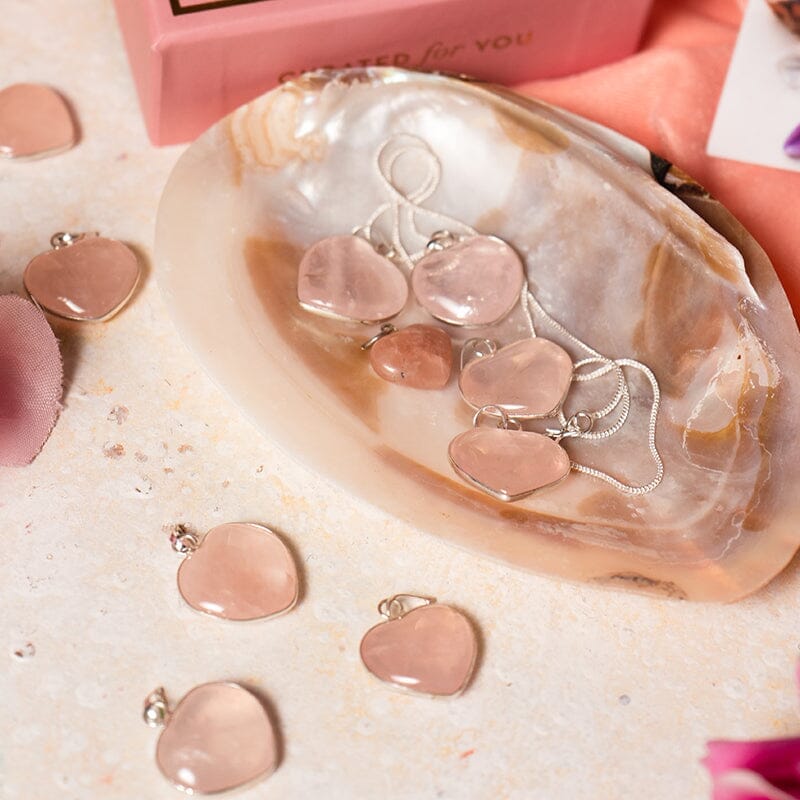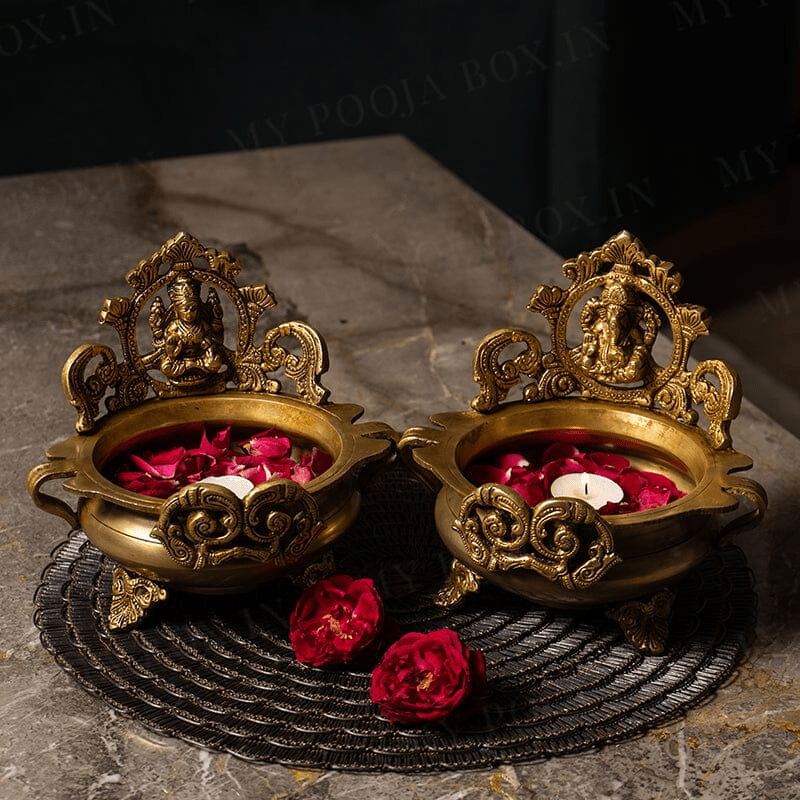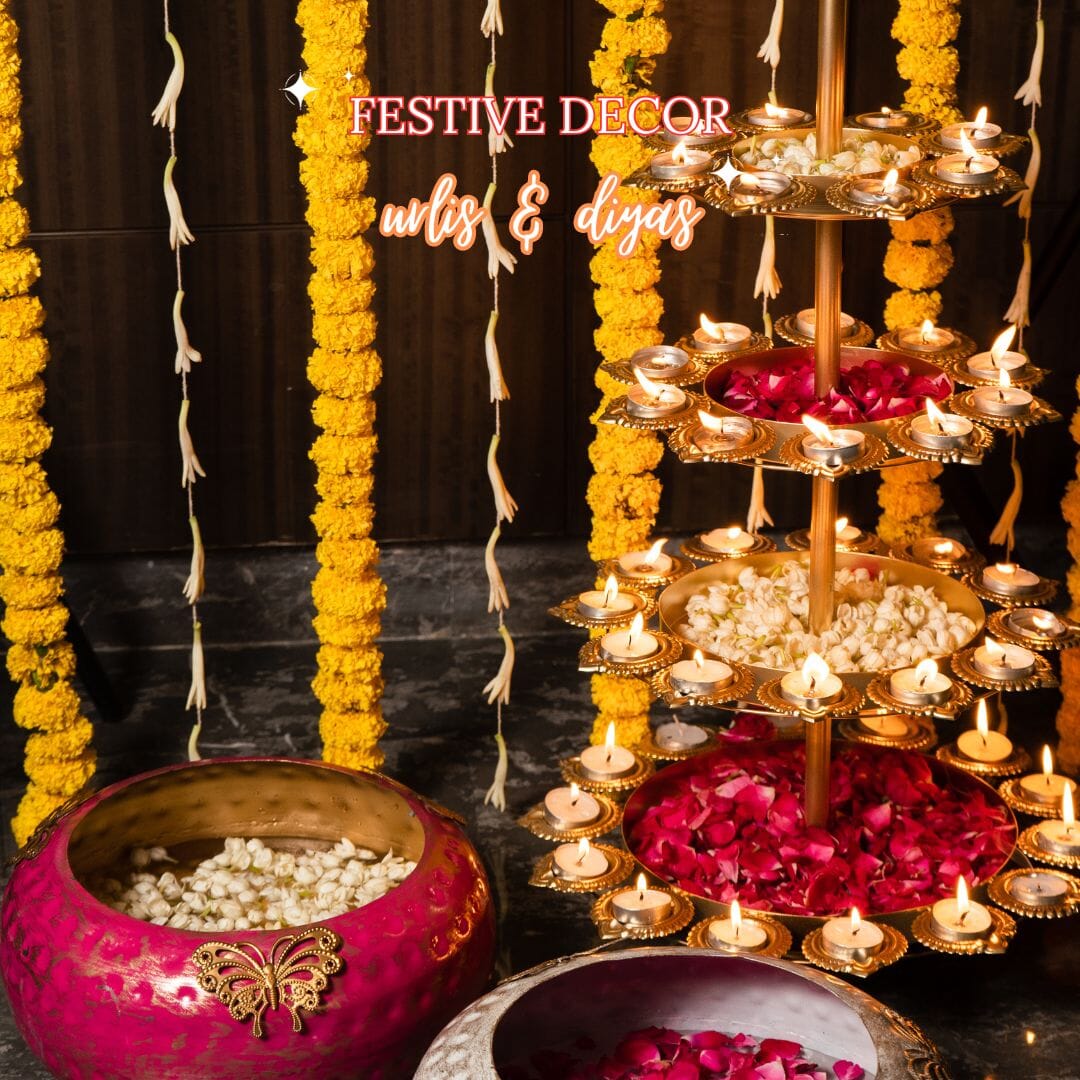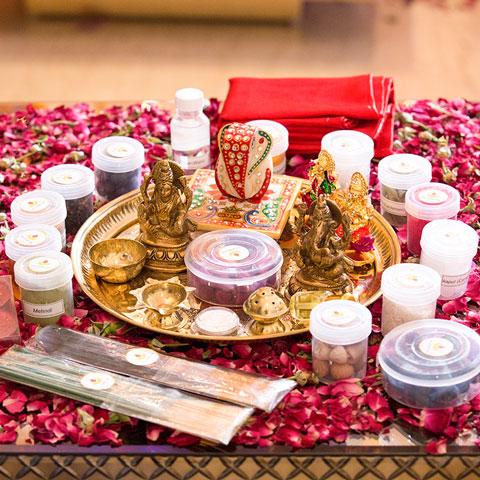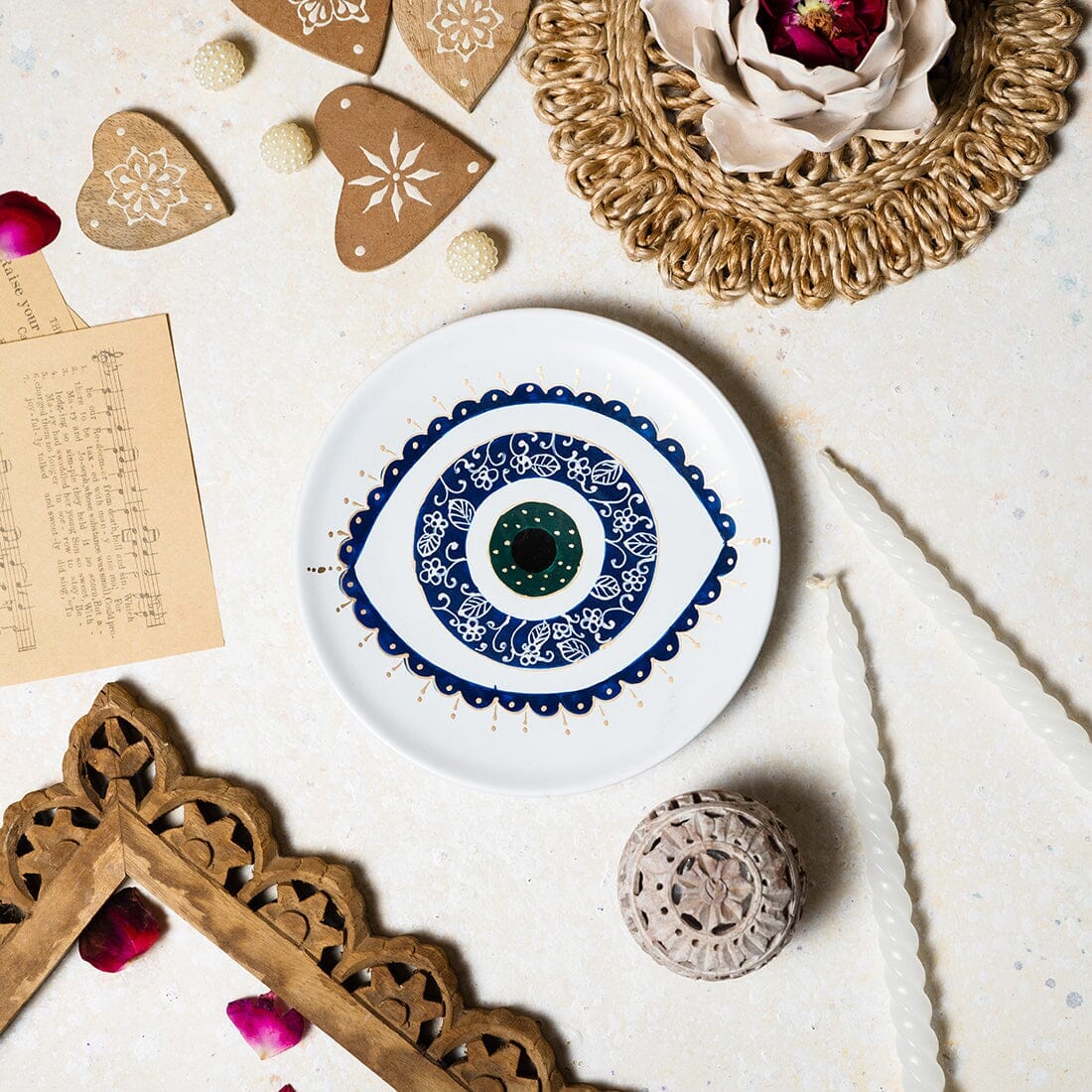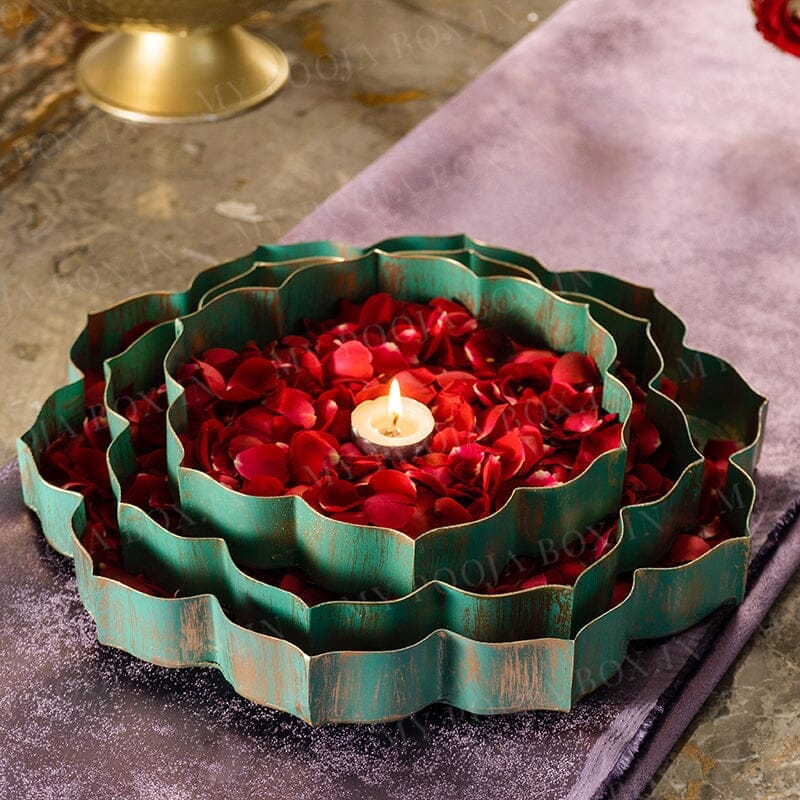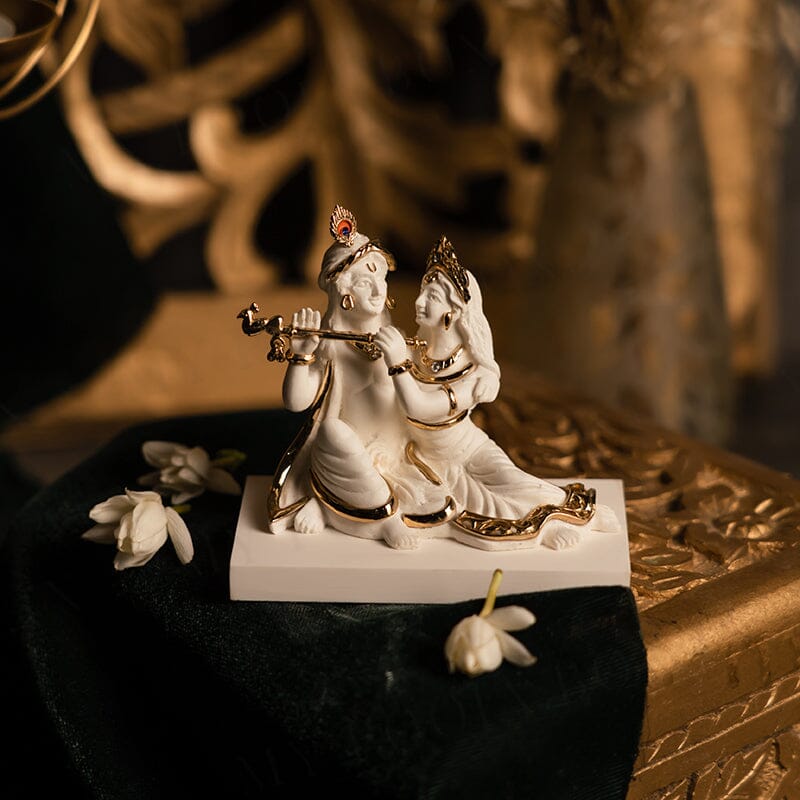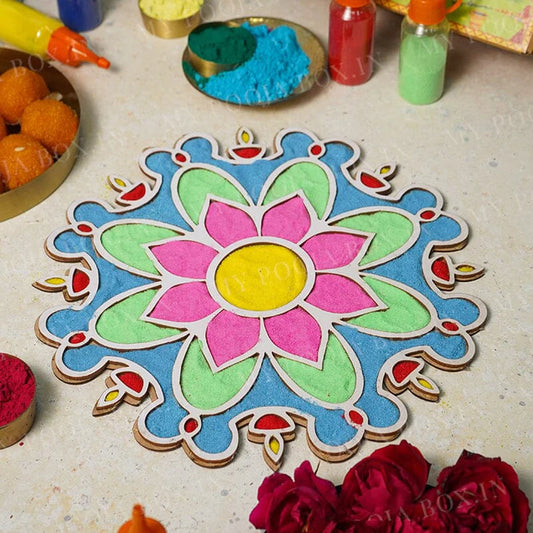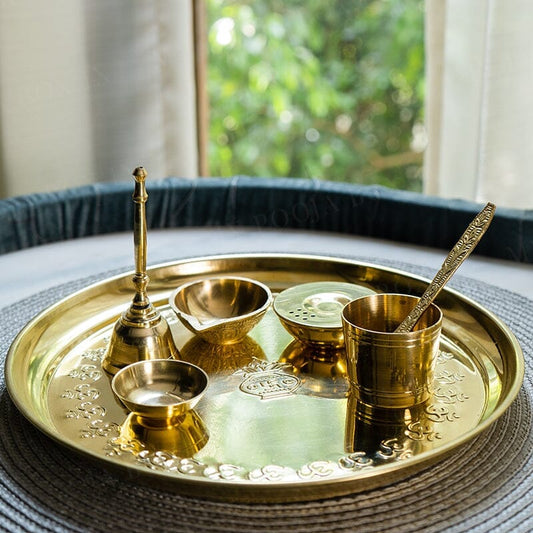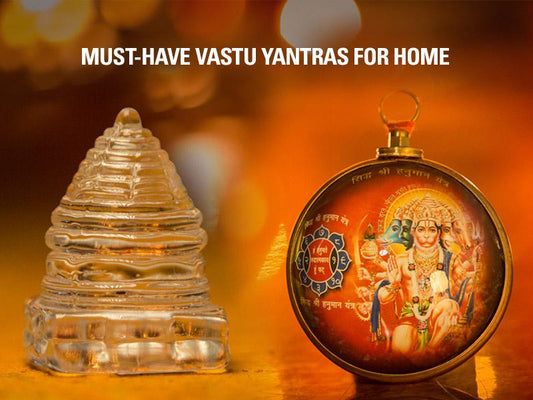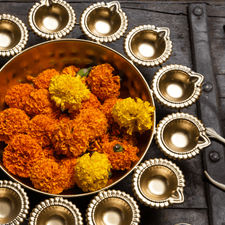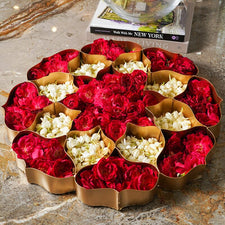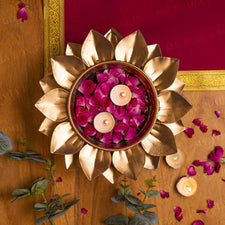India, a country having versatile traditions, is highly popular for its festivities and celebrations. India is a country of colourful festivals and religious celebrations. Religions like Hinduism, Christianity, Islam and much more, cherish their traditional values and worship their deities by keeping their old principles alive.
Auspicious dates are noted, the celebrations are planned, decorations are made, long established foods are made, and so much goes on. Colours fly across the sky, making the cities look incredibly gorgeous. One of such auspicious festivals of Hindus, include the Durga Puja or popularly known as Navratri. Navratri’s history and significance is unique, just like its celebrations and such. It is one of the most celebrated festivals of Hindus.
History of Durga Puja (Navratri):
Navratri, which is also known as Durga Puja, is one of the major festivals of Hinduism in India. It is traditionally known to be held in the Seventh Hindu month, Ashvina( September-October), for 9 nights,to be exact. The festival is popularly celebrated all over India by Hindus, especially in Bengal, Assam, and the other eastern parts of India. This festival has different significance and is said to have different histories, based on different regions.

The main story goes as such:
Mahishasura, a demon of sorts, was granted the wish of immortality by Lord Brahma, a God in Hindu Religion. Yet the wish had a loophole. Mahishasura was told that he could be killed only by a woman. With his head deep in pride, Mahishasura started tormenting Trilok, Heaven, Earth and Hell. Angered by his actions, Lord Vishnu and Lord Shiva, decided to put an end to the atrocities of Mahishasura.
They created Durga, a powerful, warrior goddess. The goddess engaged him in battle, while the demon kept changing forms, confusing the goddess. Finally, after 15 days of battle, the goddess killed him with her Trishul, while Mahishasura was in the form of a buffalo.
The day on which the demon was killed was known to be the day of Mahalaya,the first day of Durga Puja, since then. The festival of Navratri was celebrated to mark the victory of Goddess Durga over the demon, putting an end to his crimes. The nomenclature of Navratri is said to be derived from the ancient Hindu language, Sanskrit. “Navratri” in sanskrit means “Nine Nights”.
The span of nine days is normally split into 3 sets, where Goddesses Saraswati, Lakshmi and Parvati, the common manifestations of Devi are worshipped in pomp and honour.
Significance of Durga Puja in Navratri:
On each day, one form of Goddess Durga is worshipped. The nine forms of Goddess Durga are as follows:
1. Shailputri (Day 1)
Believed to be the first manifestation of Goddess Durga, Goddess Shailputri holds a lotus in one hand and a Trishul in the other, riding a bull called Nandi. People offer Pure Ghee to the Goddess, in order to be blessed with a healthy life, free of illness and diseases.
2. Brahmacharini (Day 2)
The Goddess having a rudraksha mala in one hand and a sacred kamandalu in other, symbolising the form of Goddess Parvati, when she was immersed in the state of deep meditation to please her husband, Lord Shiva. Sugar is normally offered, to be blessed with the long lives of family members.
3. Chandraghanta (Day 3)
She has a crescent moon on her forehead, which gives her her name. She is a 10 armed fierce goddess, riding a tiger. She is offered Kheer, and is believed to drive away all the pain in one’s life.
4. Kushmanda (Day 4)
Kushmanda, which is roughly translated into the creator of the universe, is derived from Sanskrit. The goddess is offered Malpua, to gain the blessings of the goddess, which is said to improve the intellectuals and decision making abilities of the person.
5. Skandamata (Day 5)
A four armed goddess, who carries lotuses in two of her arms and a kamandalu in one and a bell in the other, is seated on a blossomed lotus gracefully. She is also believed to carry Kartikeya on her lap, her and Lord Shiva’s son. Because of this, Karthikeya is sometimes also called Skanda. Bananas are offered to Skandamata.
6. Katyayani (Day 6)
Worshippers offer Honey to Katyayani, who is supposedly one of the fiercest forms of Sakthi. She carries a sword, and rides a lion. She is the daughter of Sage Katyayan and has four arms.
7. Kaalratri (Day 7)
According to legends, Goddess Kaalratri sacrificed her skin color and dorned on dark complexion, to kill demons. She is believed to have a third eye on her forehead, in which the entire universe is contained. She carries a trident, a noose and a sword in her four arms, and rides a donkey. Jaggery is offered to bring happiness and relief from pains and obstacles.
8. Mahagauri (Day 8)
With a damru and a Trishul in her hands while riding a bull or an elephant, Mahagauri is said to be a four armed goddess and is offered coconut.
9. Siddhidatri (Day 9)
On the final day of Navratri, Goddess Siddhidatri is worshipped. She is the form of Goddess Durga, that signifies perfection. She sits on a lotus, holding a mace, a dicus, a book and a lotus in each of her four hands.
Sesame Seeds are offered to the Goddess, asking to be blessed with safety and security.
A different colour is associated with the nine days of the festival. On the final day, the tenth day, which is known as Vijaya Dashami, which is translated to the “Tenth Day of Victory”, is celebrated with drum beats, loud chantings, long processions to rivers, where the Goddesses statues are immersed. This symbolises the departure of the goddess to her home, The Himalayas, where her husband, Lord Shiva, is believed to be.
Various images and statues of Goddess Durga, killing the demon king, are painted and are placed at various temples and Pandals( decorated galleries and bamboo structures).
While the Eastern and North Eastern Parts of India celebrate Navratri as Durga Puja, symbolizing the victory of Goddess Durga over the demon Mahishasura, the people of other Northern and Western parts of India, celebrate this auspicious day to mark the victory of Lord Ram over Lord Ravana.
Family and friends put on new attire, eat traditional foods and celebrate the nine days of Navratri every year with pure joy and excitement. Though Navratri is believed to fall four times a year, the one observed during the month of September and October is considered to be the most auspicious one.
This is said to purify the mind and soul of the people,with its glorious chants and rituals.
Nine Colour Significance of Durga Puja/Navratri:
Devotees of Goddess Durga normally wear clothes and attires during this 9 day span according to the nine colours traditionally believed to be auspicious if worn on the specific colours. They are believed to bring good luck and prosperity. The nine colours are listed below:
Day 1-Orange:
The Colour signifies energy and happiness, with its vibrant brightness.
Day 2-White:
Symbolises Peace and Purity.
Day 3-Red:
Red signifies beauty and fearlessness.
Day 4- Royal Blue:
Considered appropriate and good for health and wealth.
Day 5-Yellow:
Believed to be the colour of happiness and brightness and is worn on the fifth day of Navratri.
Day 6-Green:
Denotes New Beginnings and Growth.
Day 7-Grey:
Signifies Transforming strength.
Day 8-Purple:
Symbolises intellect and peace.
Day 9-Peacock Green:
Peacock Green is worn on Navami, the last day of rituals and is said to fulfill the desires and wishes of the devotees.
This colour significance commences on the tenth day, Vijayadashami or Dussehra, otherwise known as the “Day of Victory”. Dussehra symbolises the victory of good and peace.
Durga Pooja Samagri List:
1. Samagri for Kaal Sthapana for Gatasthapana
● A Kalash made of copper/bronze/brass/silver (steel and plastic kalash prohibited)
● Coconut with its husk
● Mango leaves or betel leaves
● Haldi
● Kumkum
● Chandan
● Akshat
● Ganga jal
● Currency coins
● A piece of red cloth or chunri
● Flowers
● Brown soil or clay
● A plate to keep the kalash on
● Nav Dhanya (seeds of nine different grains)

2. Samagri for Nav Durga Pooja
● Unused and fresh piece of red cloth or chunari
● Shringar items (sindoor, henna, kajal, bindi, bangles, alta, comb, toe ring, nose pin, mirror, anklets, perfume, earing, red chunri, hairpins, mahawar, etc)
● Sesame or mustard oil or ghee for Akhand Jyot.
● Gangajal
● Brass/silver lamps
● Cotton wicks
● Dhoop
● A chowki or raised wooden platform where Maa Durga idol is kept
● Incense sticks
● Coconut
● Akshat (holy rice)
● Paan and supari
● Camphor (kapoor)
● Idol made of panch dhatu (five metals)
● Kumkum
● Haldi (turmeric)
● Chandan
● Sweets
● Sacred threads (red and yellow)
● Naivedya or Bhog which includes fruits, makhanas, sweets, etc
● Currency coins
● Trays for arranginging the offerings
3. Other items
● Toran made of mango leaves to hang on the entrance of your house
● Decorative lights (optional)
Puja Vidhi of Durga Puja in Navratri:
The Puja Vidhi of Durga Puja in Navratri normally tells us about the materials and other items used during the puja. It tells us about the ways the rituals must be traditionally performed and the rules that must be followed. Some of the products are must, while preparing for a Navratri ritual and celebration. Some of them include:
Mangal Kalash:
It is believed that all the constellations, pilgrimages and planets reside inside Mangal Kalash and is said to be a symbol of happiness, prosperity and auspiciousness. It is considered that the northerly angle is the point of positivity and hence the idol or the kalash of the goddess is kept facing this direction.
Sowing Barley along with Ghatasthapana:
The growth of barley on the first day of Navratri Puja, is said to symbolize the growth of peace, prosperity and progress . It is believed that the growth of barley can determine the effect of future events. When the barley grows fast and strong, it is said that there will be prosperity in the house, while if the barley dies and withers, there will be some kind of misfortune for the household in the upcoming future.
Bandhanwars are decorated:
In order to keep the evil forces and omens away from the house, fresh mango leaves or Ashoka leaves are tied in front the houses, during any auspicious event since Vedic period. This keeps evil outside and brings the Goddess inside.
The Glowing Lamp:
By burning a undying lamp of pure ghee and worshiping Goddess Durga, it is believed that the negative energies are pushed away from the house, while positive energies are spread throughout the house with the help of the glowing lamp and the environment is said to be purified.
It is also a symbol of happiness and prosperity and also denotes the third eye of Lord Shiva and Goddess Durga in one of her forms. The unbroken lamp is normally placed in the direction of the south-east, which represents fire. By placing the lamp in a certain angle, the enemy is said to be conquered, bringing peace and joy to the household.
Red Jaggery Flower:
Being very soft and red, the Red Jaggery Flower is believed to be very dear to Goddess Bhagwati, and when offered,is known to please the goddess, making her fulfil the devotees’ dreams and wishes. It is a symbol of positive strength, fierceness and immense strength too.
Coconut:
The outer part of the coconut, believed to symbolize arrogance and the inner covering symbolizing purity and peace, is broken into two halves and offered to the Goddess, denoting the breaking of ego. Yet , it is customary to keep the coconut wrapped in a red cloth and moli over the urn, which supposedly fulfils the wishes of the devoted.
Foods to be eaten and prepared during Durga Puja in Navratri:
Navratri, being a highly traditional and auspicious day, has some ground rules even in the food prepared and taken. Some ingredients and dishes must be avoided during the vrat of Navratri. Most devotees who can, keep fast for the entire nine days, while some flex it according to their health. Foods and ingredients that can be consumed during Navratri Fast include:
● Seasonal Fruits
● Jaggery, Regular sugar, Honey, Raw Sugar
● Milk,Curd
● Coconut Water, Grated Coconut
● Any Kind of Nuts and Seeds
● Sabudana
● Phool Makhana
● Sama ke Chawal
● Sama ka Atta
● Kutta ka Atta
● Singhade ka Atta
● Rajgira
● Spices and seasoning include
Cumin Powder,Black pepper,Cardamom,Coriander Leaves,Ginger root, Lemon juice,Green chillies and some other specified ingredients and dishes.
Dishes to avoided during Navratri include:
● Packed Food Items
● Alcohol
● Garlic
● Onion
● Table salt
● Non-Vegetarian dishes and Meat
● Chocolates, Candies, Cold Drinks
● Cakes and biscuits
● Cereals and pulses and some others too.
Puja Date & Time ( for 2023) for Durga Puja Celebration for Navratri
Beginning with the Ghatasthapana, Navratri this year is observed on 26th September. Celebrated with fervor, this festival ends on 5th October which marks the victory of good over evil, where Goddess Durga killed the demon Mahishasur. Below are the timings and dates given for Durga Puja.
Sunrise - 26th Sep, 2023 6:20 AM
Sunset - 26th Sep, 2023 6:15 PM
Pratipada Tithi Starts - 26th Sep, 2023 3:24 AM
Pratipada Tithi Ends -27th Sep, 2023 3:08 AM
Abhijit Muhurat Time - 26th Sep, 11:54 AM - 12:42 PM
Ghatasthapana Muhurta - 26th Sep, 06:20 AM - 10:19 AM
Navratri Puja Mantra:
Dedicating the nine days to the 9 forms of Durga Devi, each mantra is to be chanted to please Maa Durga on the eve of Navratri. Here are nine powerful mantras that are sure to bring you good luck, happiness, and prosperity.
Navratri Day 1 Mantra : Maa Shaitalpuri
Navratri Day 2 Mantra : Maa Brahamacharini
Navratri Day 3 Mantra : Maa Chandraghanta
Navratri Day 4 Mantra : Maa Kushmanda
Navratri Day 5 Mantra : Maa Skandamata
Navratri Day 6 Mantra : Maa Katyayani
Navratri Day 7 Mantra : Maa Kaalaratri
Navratri Day 8 Mantra : Maa Mahagauri
Navratri Day 9 Mantra : Maa Siddhidatri
One of the highly traditional and auspicious days of Hindu Religions, the Durga Puja of Navratri is celebrated by people all over the world. With its beautiful customs and authentic attire, rituals and traditions, they are unmistakably one of the best times of the year for families and friends.
With blessings from Goddess Druga and other deities, let the year begin with abundance and great prosperity for everyone who celebrates Navratri. May all their wishes and desires be fulfilled...!
